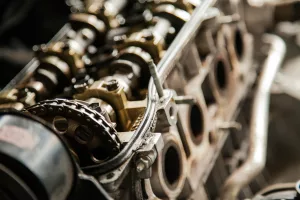Buying a used car can be a smart financial decision, offering significant savings compared to a brand-new vehicle. However, it also comes with risks, including hidden issues, undisclosed damages, and potential future repair costs. To ensure you make a sound investment, it’s essential to thoroughly evaluate all aspects of a used vehicle before finalizing a purchase. In this detailed guide, we will walk you through 10 critical factors to consider before buying a used car, helping you avoid costly mistakes and make an informed decision.
1. Vehicle History Report: Uncovering the Car’s Past
The vehicle history report is the first step in understanding the car’s background. Services like Carfax, AutoCheck, or the National Motor Vehicle Title Information System (NMVTIS) provide reports that reveal crucial details about a vehicle’s past. A comprehensive vehicle history report can tell you:
- Previous Accidents: Even minor accidents can affect a car’s structural integrity and performance. Major accidents, especially those resulting in frame damage, can lead to long-term issues despite repairs. A car involved in a serious collision may have hidden problems that compromise safety and performance.
- Title Status: The title indicates legal ownership and the condition of the vehicle. A clean title means the car has no significant issues, while a salvage title indicates that the car was declared a total loss by an insurance company, often due to severe damage. Vehicles with rebuilt or salvage titles are typically cheaper but come with higher risks.
- Odometer Readings: Odometer fraud is a common issue in the used car market. The history report tracks mileage at different points in the car’s life, helping you spot discrepancies that may indicate tampering.
- Service and Maintenance Records: Regular service is crucial for a car’s longevity. Some history reports include records of oil changes, brake services, and other maintenance, giving you insight into how well the car has been cared for.
- Ownership History: The number of previous owners and the duration of their ownership can provide clues about the car’s reliability. Multiple short-term owners could be a red flag, indicating persistent problems or dissatisfaction with the vehicle.
Understanding a vehicle’s history is vital to determining whether it’s a good investment. A clean and well-documented history report suggests the car has been properly maintained and is less likely to have hidden problems.
2. Mileage: Balancing Usage and Wear
Mileage is one of the most significant indicators of a vehicle’s overall condition. Typically, cars average between 12,000 and 15,000 miles per year. However, mileage alone doesn’t tell the full story. When evaluating mileage, consider the following:
- High Mileage vs. Low Mileage: High-mileage vehicles (over 100,000 miles) may have more wear and tear on components like the engine, transmission, and suspension. On the other hand, a low-mileage car that is several years old could have spent long periods sitting idle, which can cause issues like fluid degradation, rust, and dry rot in tires.
- How the Mileage Was Accumulated: Highway miles are generally less taxing on a car than city miles. Highway driving involves less frequent stopping and starting, which reduces wear on the brakes, transmission, and engine. City driving, on the other hand, involves constant braking, accelerating, and idling, which can lead to more wear and tear.
- Maintenance vs. Mileage: A well-maintained high-mileage vehicle may be more reliable than a low-mileage vehicle that hasn’t been serviced regularly. Consider how often the car received oil changes, brake checks, and other routine maintenance. Regular care is often more important than the mileage itself.
3. Mechanical Condition: The Importance of a Professional Inspection
Even if the car looks perfect on the outside, hidden mechanical problems can lead to expensive repairs. Unless you’re an experienced mechanic, it’s highly advisable to have the car inspected by a professional before purchasing. Here’s what a thorough inspection should cover:
- Engine and Transmission: The engine is the heart of the car, and any issues here can be costly. Look for signs of oil leaks, unusual noises, or rough idling. The transmission should shift smoothly without hesitation or jerking. Automatic transmissions should engage gears smoothly, while manual transmissions should have a firm and precise shift feel.
- Brakes and Suspension: Worn-out brakes can lead to safety hazards. During the inspection, the mechanic should check the brake pads, rotors, and fluid levels. The suspension system, including shocks and struts, should also be examined for wear. Uneven tire wear or a bumpy ride can indicate suspension issues.
- Exhaust System: A failing exhaust system can lead to poor performance, loud noises, and even failed emissions tests. Rust or holes in the exhaust pipes, muffler, or catalytic converter should be addressed before purchasing.
- Fluid Levels and Condition: The condition of fluids like engine oil, coolant, brake fluid, and transmission fluid can provide insight into the car’s maintenance history. Old, dark, or low fluids suggest neglect, which could lead to future mechanical problems.
- Battery and Electrical System: Check the condition of the battery, as a weak or old battery can cause starting issues. The inspection should also cover the alternator, starter, and overall electrical system, ensuring that lights, windows, and other electronics function properly.
A professional inspection can uncover issues that aren’t immediately visible, giving you the knowledge you need to negotiate the price or avoid a problematic vehicle altogether.
4. Exterior and Interior Condition: Spotting Signs of Damage and Wear
The physical condition of a used car provides valuable clues about how it has been treated over the years. Pay close attention to both the exterior and interior for signs of wear, neglect, or damage:
Exterior:
- Paint and Bodywork: Look for paint inconsistencies, scratches, dents, and rust. Mismatched paint or uneven panel gaps may indicate that the car has been in an accident and repaired. Rust spots, especially around the wheel wells and undercarriage, can worsen over time and lead to structural issues.
- Tires and Wheels: Inspect the tires for tread wear and sidewall cracks. Uneven wear could indicate misalignment or suspension problems. Check the wheels for damage, especially on alloy wheels, which can be expensive to repair or replace.
- Glass and Lights: Ensure that all windows are free from cracks or chips, as these can worsen and require costly replacements. Test all lights, including headlights, taillights, turn signals, and brake lights, to ensure they are working correctly.
Interior:
- Upholstery and Trim: Examine the seats, carpets, and trim for stains, tears, or signs of excessive wear. Significant wear and tear can indicate that the car was heavily used or not well-maintained. Leather seats should be checked for cracks and fading.
- Dashboard and Electronics: Inspect the dashboard for warning lights that stay on, which could indicate underlying problems. Test all electronic features, including the infotainment system, air conditioning, power windows, and locks. Make sure the climate control system heats and cools the cabin effectively.
- Odor: Unpleasant odors in the cabin, especially mold or mildew, can suggest water damage or poor interior care. Musty smells could indicate leaks or past flood damage, while the strong scent of air fresheners might be masking other odors.
The overall condition of the car’s exterior and interior is a reflection of how the previous owner treated it. A well-maintained vehicle is more likely to be reliable, while signs of neglect could indicate deeper issues.
5. Service and Maintenance Records: Evidence of Proper Care
A used car’s service history is one of the most reliable indicators of its future performance. Consistent, documented maintenance suggests that the car has been well-cared for and is less likely to suffer from unexpected breakdowns. Here’s what to look for in service records:
- Regular Oil Changes: Frequent oil changes are essential for engine health. Check if the oil changes were done at regular intervals (every 3,000-5,000 miles for conventional oil, or every 7,500-10,000 miles for synthetic oil).
- Scheduled Maintenance: Cars have manufacturer-recommended maintenance schedules for tasks like changing air filters, replacing brake pads, and timing belt replacement. Ensure that the car’s previous owner followed these schedules, as skipping critical services can lead to costly repairs later on.
- Major Repairs: Look for records of any significant repairs or part replacements, such as the transmission, timing belt, or water pump. These repairs can be expensive, so having them documented provides peace of mind. If the car is nearing a major service interval (like timing belt replacement at 100,000 miles), consider the cost of that service in your decision.
- Where the Work Was Done: Service performed at a dealership or certified shop is typically more reliable than work done at unknown garages or by the owner themselves. Dealer-serviced vehicles often come with more thorough documentation.
Comprehensive service records are a positive sign that the car has been well-maintained, making it a safer and more reliable choice.
6. Test Drive: The Most Important Step
The test drive is your chance to experience how the car feels on the road and spot any issues that may not be obvious in a visual inspection. Here’s what to focus on during the test drive:
- Engine Performance: Start the engine and listen for any unusual noises like ticking, knocking, or whining. These sounds could indicate internal engine problems. The engine should idle smoothly without shaking or sputtering. Accelerate gently and then more aggressively to check for any hesitation, misfires, or power loss.
- Transmission Behavior: The transmission should shift smoothly without any delays, clunks, or slipping. In an automatic transmission, shifts should be nearly imperceptible. In a manual transmission, the clutch should engage smoothly, and the shifter should move easily between gears without grinding.
- Steering and Handling: Test the car’s handling by driving at different speeds, turning corners, and performing quick maneuvers. The steering should feel responsive and stable, with no excessive play or vibration. If the car pulls to one side, it may have alignment issues.
- Braking: Test the brakes at different speeds to ensure they engage firmly and smoothly without causing the car to jerk or vibrate. Listen for squeaking, grinding, or clunking noises when braking, as these could indicate worn pads, rotors, or suspension components.
- Suspension and Ride Quality: Drive over bumps, rough roads, and uneven surfaces to evaluate the suspension. The car should absorb bumps smoothly without excessive bouncing or body roll. Any clunks, creaks, or harsh impacts may indicate worn-out suspension components.
- Electronic Systems: Test all the car’s electronic features, including the air conditioning, infotainment system, lights, windows, and mirrors. Malfunctioning electronics can be costly to repair, especially in older cars.
A test drive is the most critical part of the car-buying process, as it allows you to assess the car’s overall condition and driving characteristics. Don’t rush through the test drive—take your time to evaluate everything thoroughly.
7. Price and Value: Ensuring You Get a Fair Deal
Determining whether the asking price is fair is an essential part of buying a used car. Overpaying for a vehicle that doesn’t meet your needs or that requires significant repairs can be a costly mistake. Here’s how to assess the price and value:
- Research Market Prices: Use resources like Kelley Blue Book (KBB), Edmunds, and NADA Guides to determine the fair market value of the car based on its make, model, year, mileage, and condition. These tools provide a range of prices, from private party sales to dealer listings, giving you a benchmark for negotiations.
- Consider Depreciation: All vehicles lose value over time, but some depreciate faster than others. Luxury cars, for instance, tend to lose value more quickly, while reliable brands like Toyota and Honda retain their value better. Understanding the depreciation curve of the model you’re considering can help you make a smarter purchase.
- Factor in Repair and Maintenance Costs: A car with a lower purchase price might seem like a good deal, but if it requires significant repairs or has high maintenance costs, it could end up being more expensive in the long run. Consider the total cost of ownership, including potential repairs, before making a decision.
- Negotiation Room: Used car prices are often negotiable, especially if you can identify issues that require repairs or if the car has been on the market for a while. Use the information you’ve gathered from your research, inspection, and test drive to negotiate a fair price.
The goal is to strike a balance between getting a good deal and ensuring the car is worth the investment. A fair price reflects both the car’s condition and the market demand.
8. Ownership Costs: Beyond the Purchase Price
When buying a used car, it’s important to consider the ongoing costs associated with ownership. These costs can vary significantly depending on the make, model, and condition of the vehicle. Key factors to evaluate include:
- Insurance Costs: Insurance premiums can vary based on the car’s age, safety features, repair costs, and your driving history. Luxury vehicles, sports cars, and cars with high theft rates generally have higher insurance premiums. Get insurance quotes for the specific make and model you’re considering to avoid surprises.
- Fuel Efficiency: A car’s fuel economy is another important factor. High-performance vehicles, older cars, and larger SUVs tend to have lower fuel efficiency, which can lead to higher fuel costs. Evaluate whether the car’s fuel consumption aligns with your budget and driving habits.
- Maintenance and Repair Costs: Some vehicles are more expensive to maintain due to the cost of parts, labor, and the frequency of repairs. European brands like BMW, Mercedes-Benz, and Audi typically have higher repair costs due to specialized parts and servicing needs. Research common repairs and their associated costs for the model you’re considering.
- Depreciation: Depreciation continues after you buy the car, impacting its resale value. Reliable and well-maintained vehicles tend to hold their value better, while cars with known reliability issues depreciate faster. Consider how long you plan to keep the car and whether it will retain enough value when you decide to sell it.
Understanding these ownership costs is crucial for budgeting and ensuring that the car fits within your financial means over time.
9. Title Status and Documentation: Ensuring Legal and Financial Clarity
The title and documentation of the car are critical in confirming that the sale is legal and that you’re buying a vehicle without financial or legal issues. Here’s what to check:
- Title Status: A clean title means the car has not been significantly damaged or declared a total loss by an insurance company. Avoid vehicles with salvage titles, as they have been heavily damaged and rebuilt, often leading to hidden issues and lower resale value. Similarly, cars with rebuilt titles may have undergone extensive repairs that could affect their reliability.
- Lien Check: Ensure the car is free from any liens, meaning there are no outstanding loans or financial obligations tied to it. If the seller still owes money on the car, they need to settle the debt before transferring ownership. Buying a car with a lien can lead to legal and financial complications.
- VIN Verification: The Vehicle Identification Number (VIN) should match the one listed on the title and all other documents, including the history report. A mismatched VIN could indicate a stolen or fraudulent vehicle.
- Bill of Sale and Purchase Agreement: Whether buying from a private seller or a dealership, make sure you receive a bill of sale or purchase agreement that clearly outlines the terms of the sale, including the purchase price, any included warranties, and the car’s condition.
Ensuring that all the legal and financial documentation is in order is essential for a smooth transaction and future ownership. A clear title and proper paperwork protect you from potential disputes and financial liabilities.
10. Reputation and Reliability of the Model: Making an Informed Choice
The make and model you choose can significantly impact your ownership experience. Some cars are known for their reliability, while others have a reputation for frequent and costly repairs. Before committing to a purchase, research the model’s history and reliability:
- Reliability Ratings: Websites like Consumer Reports, J.D. Power, and U.S. News & World Report provide detailed reliability ratings based on owner surveys, expert reviews, and historical data. Look for models with high reliability scores and positive reviews regarding longevity and maintenance.
- Common Issues: Every car model has its known weak points. Research common problems associated with the car you’re considering. For example, some vehicles are prone to transmission issues, electrical problems, or expensive repairs at certain mileage milestones. Knowing these potential problems can help you anticipate repair costs or avoid problematic models altogether.
- Recalls and Safety Issues: Check for any recalls on the model. Recalls are issued when a manufacturer identifies a safety defect, and getting recall work done should be free. However, multiple recalls may indicate a pattern of poor build quality or design flaws. Ensure that any recall repairs have been completed before buying the car.
- Owner Reviews and Forums: Online forums and owner communities are valuable resources for real-world insights into a car’s reliability and ownership experience. Owners often share their experiences with maintenance, repairs, and common issues, giving you a clearer picture of what to expect.
Choosing a model with a strong reputation for reliability and low maintenance costs will save you money and headaches in the long run.
Conclusion
Buying a used car is a significant investment, and taking the time to thoroughly evaluate every aspect of the vehicle will help you avoid costly mistakes. By considering the vehicle’s history, mileage, mechanical condition, exterior and interior quality, service records, test drive performance, price and value, ownership costs, title status, and the model’s reliability, you can make a confident and well-informed purchase. Remember, a little extra effort upfront can save you from unexpected expenses and ensure that you drive away with a car that meets your needs, budget, and expectations.




